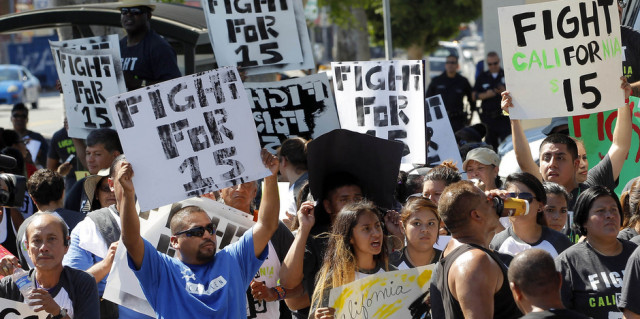Europe Needs Regime Change in Greece: They Won’t Get It by Stephen Davies
It seems the saga of negotiations between the Greek Government and its creditors has arrived at a denouement but almost certainly not a final conclusion, and we may expect this show to return to the stage at some point, probably in the near future. The reason for this is the real nature of the ultimate problem facing both parties, something of which the creditors are still unaware.
The negotiations over the last few months have been marked by a remarkable degree of acrimony. Most of the other eurozone governments have become increasingly (and publicly) exasperated with the Greeks, and the expressions of hostility towards the Greek government from members of national parliaments have grown ever more outspoken.
Some of the reasons for this are well known — above all, the lack of a true European demos: there simply is not the kind of solidarity or shared interest in Europe that one finds in, for example, the United States.
However, there is another reason for the acrimony that has not received much attention. The creditors misunderstand what it is they are asking the Greek government and society to do. This lack of understanding is why any deal made now is likely to prove a disappointment.
The impression given by media reports is that this is all about debt, specifically the debts run up by the Greek state before 2009. Certainly there is a problem, but it is one that is soluble and does not require the kind of fraught negotiations we have seen.
The difficulty is that the fiscal state of Greece before the first bailout in 2010, and the underlying state of the Greek economy, are symptoms of a much more serious underlying problem. This is one not of debt but of competitiveness.
Quite simply the Greek economy is not productive enough to support the levels of income and public spending that it now has, without significant capital inflows from outside Greece. Before 2008 these came in the form of private loans, since then by government bailouts (even if much of this has been recycled back to private creditors).
Greek firms and labour are simply not competitive with their counterparts elsewhere in Europe, above all in Germany. Being in the euro means that they cannot adopt the traditional way of regaining at least some competitiveness by devaluing their currency. Instead, they have to deflate internally, and the attempt to do this has devastated economic life in Greece.
This is all well known. It is the reason why the creditors are demanding that, in return for a third bailout, the Greek government introduce a series of reforms to public spending, the tax system, and the machinery of the Greek state, particularly it’s tax collecting apparatus. Successive Greek government have either refused to do this or promised to do it and then failed. This is why the rest of the eurozone is becoming ever more exasperated. It here however that the misunderstanding comes in to play.
What the creditors think they are asking for is a major shift in public policy. They recognise that the shift they are asking for is radical, and many also realise that what would be involved would be a shift in the general ideological basis of Greek politics, towards a more market liberal direction. However, they are actually, without realising it, asking for something much more fundamental and drastic.
One question that should be asked is why Greece got into a position that was so much worse than that of other “peripheral” economies. Also, why has the performance of the Greek economy been so much worse than that of other countries that have had bailouts and austerity, such as Spain, Portugal, and Ireland? The answer lies in the fundamental nature of the Greek state and the political economy of Greece.
Greek political culture is dominated by practices and institutions that certainly exist elsewhere in Europe but are not as dominant. The state has a narrow tax base, with powerful interests such as the Orthodox Church effectively exempt. The revenue collection apparatus is completely ineffective so that tax evasion is endemic at every level of income.
This means that simply raising or extending VAT for instance is not enough because so many transactions are off the books. At the same time, the Greek state provides generous pensions and other benefits, which it cannot fund.
The political system appears to be a modern democracy but is in fact a much older model. The key institution is clientelism, in which political actors give out rewards to their clients in the shape of handouts and sinecures in the very large public sector. This is done much more directly than with the kind of interest group politics that we find in most democratic countries, and it is central to the whole way that politics works.
The extent of patronage means that the Greek government (whoever they are) does not have a modern, Weberian, bureaucracy to call on. Instead, most of the people in the public service owe their positions to networks of patronage and these command their loyalty.
The economy is highly regulated in ways that entrench settled interests and inhibit innovation. In particular, a very wide range of occupations are subject to rules that make it very difficult for new entrants into those sectors. Because of the inefficiency and the existence of a plethora of rules that are irksome but ultimately unenforceable, corruption is endemic and widespread throughout Greek society.
This system cannot maintain anything like the standard of living to which most Greeks aspire and as such it means that, via membership of the euro, we have seen the development of an economy that depends upon inward transfers — to a much greater degree than is the case in countries such as Spain and Ireland.
Given all this, it becomes clear that what the creditors are asking for is much more than a shift in policy, no matter how sharp and dramatic. Policy shifts of that kind are part of the normal or regular political process that take place infrequently, but still regularly, in most polities. The shift brought about by Margaret Thatcher’s election in 1979 is an example.
What is needed in Greece, and what the creditors are asking for without realising it, is something more fundamental, a change in the very nature of the political system and in the entire nature of politics and government, rather than a change of policy within a system. This is a regime change in the original and correct use of that term.
The point of course is that changes of this kind are extremely difficult and only happen extremely rarely. Sometimes it requires a revolution, as in France; on other occasions, it takes place in the context of a fundamental crisis such as defeat in a major war. Very rarely it can happen when there is a near consensus in a society over what to do, as in Japan in the 1870s.
The current Greek government is almost certainly aware of this, but, apart from ideological objections to part of the list of reforms, they are quite simply unable, rather than unwilling, to do what is asked because a change in the political order is simply very, very hard.
So the creditors are likely to be disappointed and will then become even more enraged. Moreover, being in the euro makes any attempt at systemic change in Greece even more difficult than it would be already, because if removes a range of policy options that could alleviate some of the transition costs.
As most economists of all persuasions now think, the best option is a managed Greek exit from the euro. If this does not happen (as seems likely) then this farce is a production that will run for some time.
Stephen Davies is a program officer at the Institute for Humane Studies and the education director at the Institute for Economics Affairs in London.


























